(This is part two of a series. Read Part One to catch up).
If you remember the body I built for The Bacchae last year, you remember I used Dragon Skin for the majority of the project. At the time, we were using Dragon Skin Q, which was a formulation that set in 75 minutes. I discovered this year that they renamed all the products. Dragon Skin Q is now Dragon Skin 10 Fast. Regular Dragon Skin is now Dragon Skin 10 Medium. They also have Dragon Skin 20 and 30, which are new products to give different hardnesses. I learned all that at the Compleat Sculptor, which is a really great store here in NYC.
Anyway, after I coated the whole lamb with a skin of Dragon Skin, I began adding more layers with different colors. Silicone rubber sticks great to itself, and it’s easy to color with a number of pigments that they sell. You can also control the translucency and consistency of the Dragon Skin you’re putting on, which makes it possible to create a very dimensional and realistic coating.
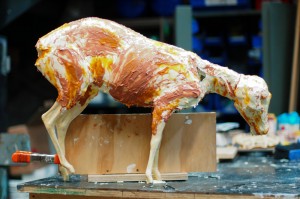
Again, it sets up in only 75 minutes. I was also adding Thi-Vex, another Smooth-On product which thickens the silicone rubber; just a few drops makes it possible to brush it onto vertical surfaces without oozing off. You can really build up a lot of layers quickly, which was vital for the short time-frame of this project.
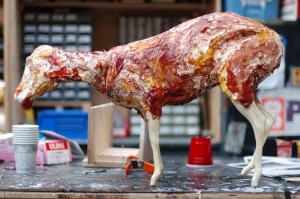
At this point, I needed to reshape some of the parts to match the research better. As I mentioned in the previous part, silicone rubber doesn’t actually stick to anything but itself. The reason it stays on the lamb is because it completely surrounds it and until you peel it away, it has a bit of surface tension and suction holding it on. I needed to slice my lamb open though, and the “skin” peeled right away, even though the body is made of fairly fragile urethane foam. Once I carved the foam into a more-correct looking shape, I folded and sort of tucked the skin back around. Some more Dragon Skin “glued” it back together, and after a few more coats, the colors blended together so well you couldn’t see the cuts anymore.
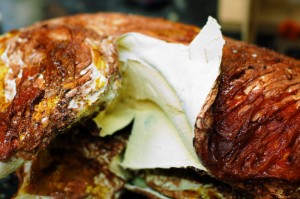
You’ll notice in the next picture I also cut the front legs down, so they would match the research better. In a bit, the back legs will be chopped in half as well. You’ll also notice the colors are fairly exaggerated. The reason is two-fold. First, once it gets on stage under lights, it will look less exaggerated. I found in making the body for The Bacchae that subtle effects disappear into a muddy mess on stage, and a bit of overemphasizing of colors and details is necessary to read from the audience. Second, the whole lamb is going to get a brown glaze over it, which will dull down the contrast and colors quite a bit.
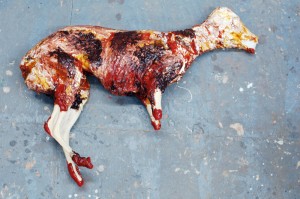
Now, one of the additional tricks to this prop is that the actors need to be able to pull chunks of meat off of it and eat it in front of the audience. To that end, I carved out a hunk in the front leg as a test. We had a chef who was working on a vegetarian fake meat substance to fill it with. My goal was to make it look like what would be left after the eating is finished.
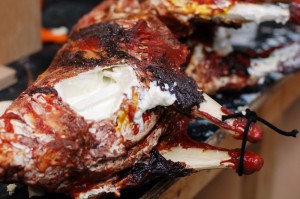
At this point, I was ready to start adding the final coats to bring the whole thing together. In the research, the outer skin looked like it was heavily seasoned. I found some coarse sand that resembled the crushed pepper in some of the photographs, and mixed it into a batch of brownish Dragon Skin. Platinum-cure RTV silicone rubber only reacts with a few things: sulfur and latex are some of the more common things to watch out for. Otherwise, you can kind of mix anything you want in there like it’s paint.
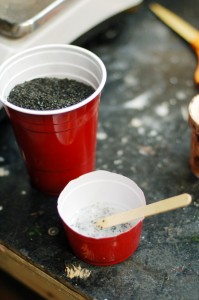
Here is a closeup of what the skin starts to look like after only a thin coat of the “glaze.”
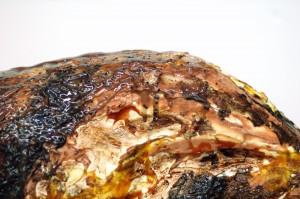
If you think he’s starting to look good now, wait until the thrilling conclusion in part three!
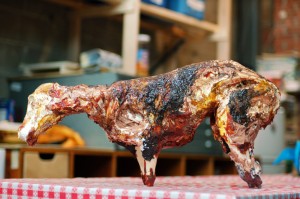

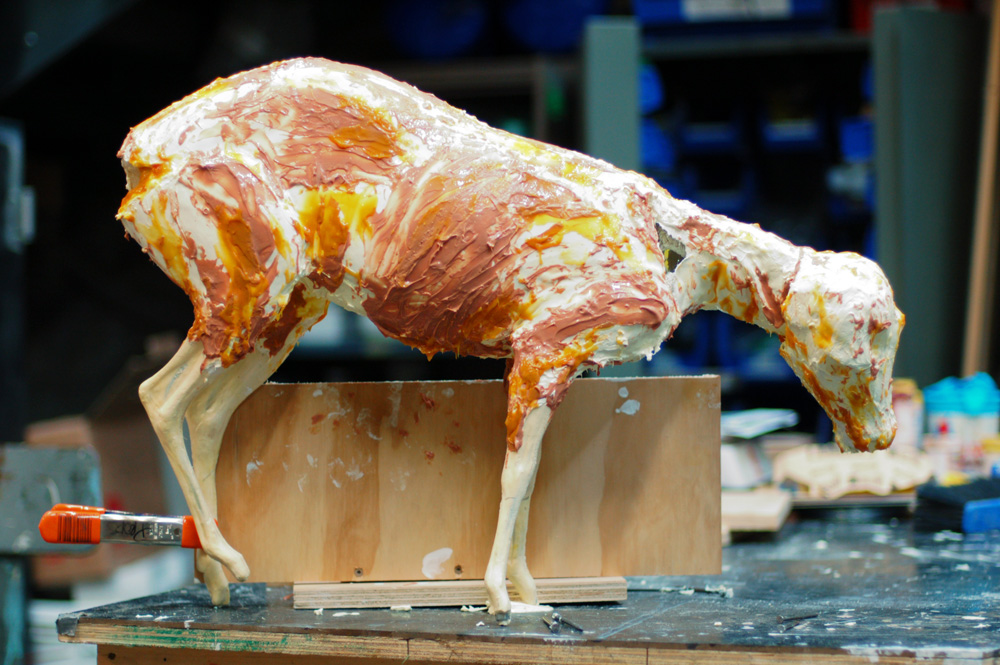




Why don’t they just pretend to eat?
It wouldn’t give as visceral a reaction to the audience. On the one hand, you can have actors tearing into flesh and getting blood all over their hands and mouths. On the other, you can have that scene in Hook where Robin Williams and those stupid kids are pretending to eat food out of empty bowls. Which do you think is more effective?